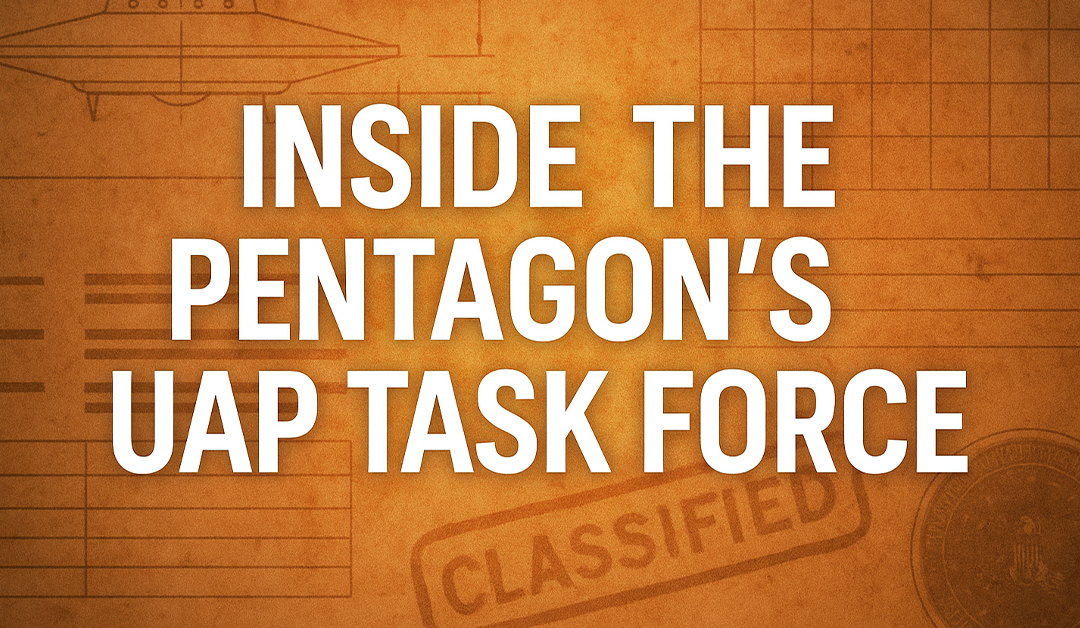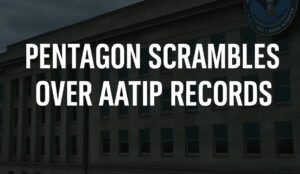A newly declassified FOIA response obtained by researcher John Greenewald reveals the official charter and inner architecture of the Pentagon’s Unidentified Aerial Phenomenon Task Force (UAPTF), created in 2020 under congressional mandate.
While many Americans first heard of the UAPTF during high-profile Senate hearings in 2021, this document shows it was already operating behind the scenes - with a formal charter, assigned leadership, and structured reporting requirements reaching the Deputy Secretary of Defense.
"The mission of the UAP Task Force is to detect, analyze, catalog, consolidate and exploit advanced non-traditional aerospace vehicles…"
- UAPTF Charter, Naval Intelligence Activity
🧭 A Mission Built for the Unknown
The UAPTF wasn’t set up to debunk flying saucers or chase rumors. Its purpose was strategic and technical:
-
To prevent "strategic surprise"
-
To coordinate intelligence across the DoD and other agencies
-
To investigate objects that may pose operational threats
These include aircraft "that cannot immediately be identified" - defined as Unidentified Aerial Phenomena, not necessarily extraterrestrial, but also not accounted for in U.S. or foreign military inventories.
The Task Force was positioned to move faster than legacy intelligence structures, thanks to direct oversight from the Naval Intelligence Activity and mandated coordination with the Air Force, Army, and Intelligence Community.
🧠 Structure and Secrecy
The documents show a heavily compartmentalized approach.
📌 Key elements include:
-
A Director appointed by the Naval Intelligence Activity
-
Regular bi-weekly internal updates and monthly reports to the Deputy Secretary of Defense
-
An Executive Steering Committee (EXCOM) for oversight
-
Specialized subgroups focused on tech exploitation and data analysis
-
Mandated participation from Army and Air Force operational and intelligence directorates
"Hold meetings, as necessary, to ensure proper tasking and coordination…"
- UAPTF Charter Directive
Despite these formal structures, only one responsive document was released in full - others were withheld under national security exemptions.
🔐 What They Wouldn’t Release
The Navy’s final FOIA response admits the existence of additional documents - but invokes two key exemptions:
-
(b)(1): For classified information under Executive Order 13526, including defense systems and intelligence sources.
-
(b)(6): For privacy-related content in personnel and medical files.
"After review, portions are exempt from disclosure…"
- Navy FOIA Office, April 2025
This suggests that technical data, personnel identities, or possibly sensor sources and methods are being shielded even from FOIA scrutiny.
📤 Multi-Agency Communication in Action
The most striking aspect of the UAPTF design is its interagency nature:
-
The Director of Naval Intelligence personally reached out to the Army and Air Force
-
Requests were made for representatives from both operations and intelligence sectors
-
Updates were funneled through UAPTF Steering Committees and internal DoD chains
This is not a rogue office. It is a formally embedded part of U.S. defense infrastructure - but operating largely outside public visibility.
🧩 UAPTF’s Legacy
While the original UAPTF was eventually absorbed into the All-domain Anomaly Resolution Office (AARO) in 2022, its foundational blueprint - as laid out in these documents - remains critical to understanding the government’s posture toward unidentified aerial events.
"The Task Force shall remain in effect until amended or otherwise revoked."
It wasn’t a temporary committee.
It was the beginning of institutional continuity on the UAP issue.






